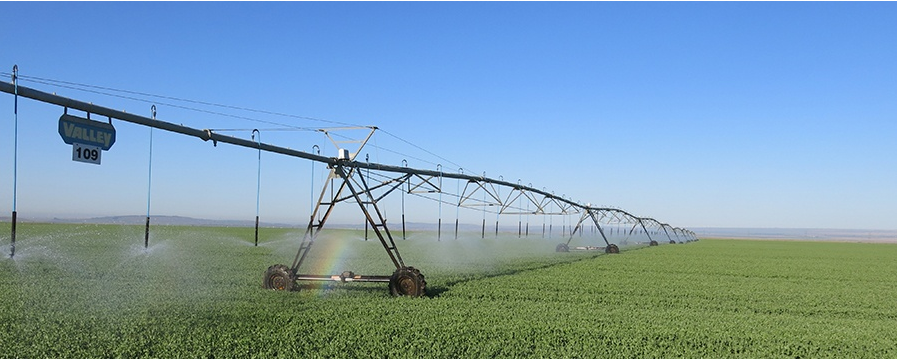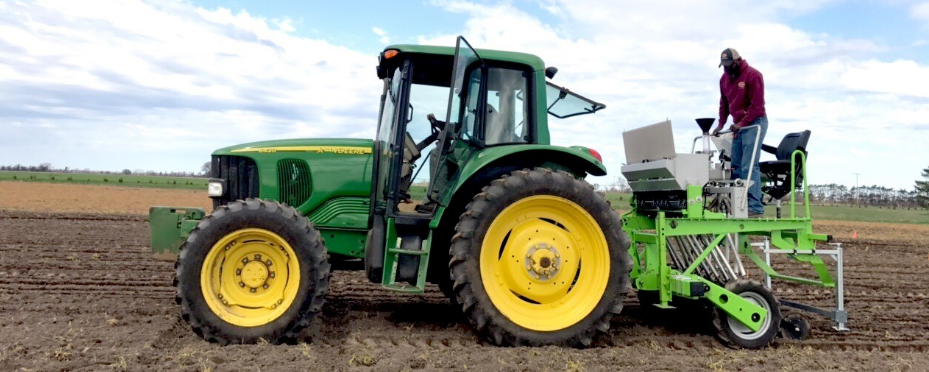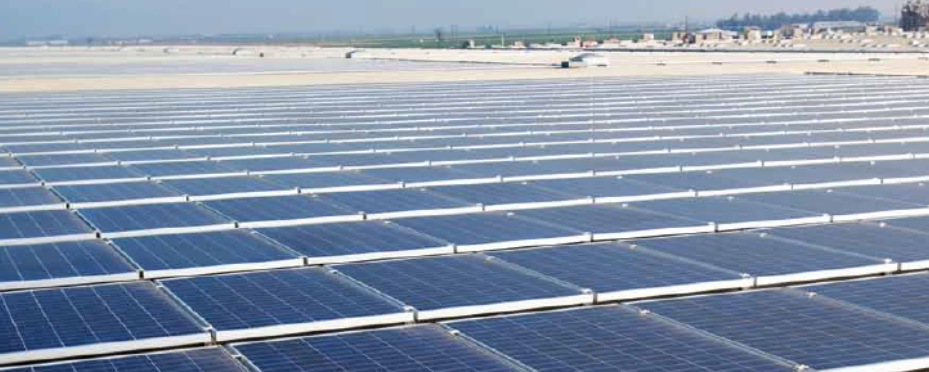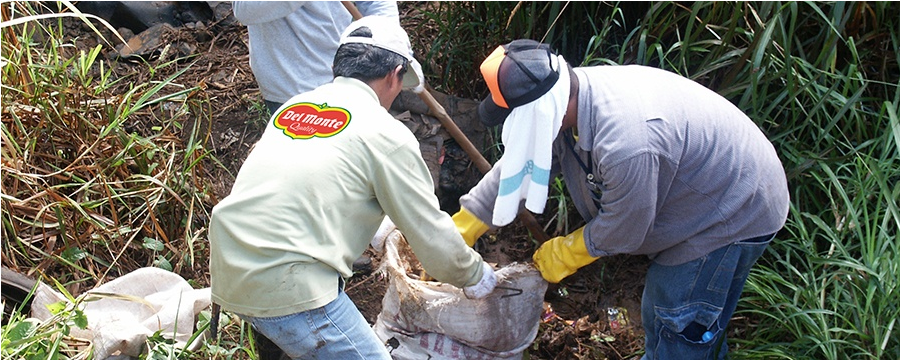Our business depends on responsible stewardship of nature, the source of our produce that will sustain our future

Pear Orchard in the US
As a food company, our business depends on responsible stewardship of nature, the source of our produce that will sustain our future. We continuously improve our agricultural practices and oversight of growers and communicate our Environmental Policy to our stakeholders.
In the US, Del Monte connects consumers with our growers by providing detailed information on how vegetables are grown through a software and partnership with the Stewardship Index of Specialty Crops organisation and partnering with a third-party vendor CropTrak™ for their crop data management system.
Our dedicated agricultural Seed Operations Research Team in Del Monte Foods, Inc (DMFI) has a plant breeding programme which selects the best plant qualities to produce a new generation. Del Monte typically tests over 1,200 genetically distinct and new varieties within a year. Moreover, our expert plant breeders and research farm staff work in tandem with our growers to introduce new crop varieties with improved yields. Over a period of time, our Blue Lake® green bean breeding programme and new growing practices have increased yields by nearly 200%.
We keep the viewpoints of our customers and growers in mind as we identify key characteristics of our plants. Their insights provide the direction for the next generation of our seeds and products. Ultimately, we test for taste, harvest cleanliness, yield, disease resistance, nutrient management and factory performance.
In Del Monte Philippines, Inc (DMPI), efficient land use is the foundation of our sustainable agriculture practices. Ecologically-minded land use management has been carried out since the time of our pioneers who started farming in 1926 and did not clear forests to give way to pineapple fields. Additional land acquired later by our pioneers was already cultivated with other crops.
Across over 90 years of operations, our land use practices have been mainly aimed at improving plantation yield through ecologically-friendly land preparation, use of sustainable planting materials, plant disease management, chemical application and efficient water sourcing and drainage.
Our plantation in the Philippines is Global Good Agricultural Practices (GLOBALGAP) certified. We also have a Philippine Good Agricultural Practices certificate issued by the Department of Agriculture.
GLOBALGAP honoured us with the Good Agricultural Practices Award (2018) for demonstrating high standards and excellent implementation of GLOBALGAP principles on our farms.
Our plantation and pack house for fresh fruits have been certified ISO 9001:2015 by SGS United Kingdom Ltd Systems and Services.
We have undertaken initiatives to reduce process residues, strengthen energy conservation in worksites and explore more efficient energy sources.


Pea plantation in Minnesota
“There can be no Plan B because there is no planet B.”
Ban Ki-Moon, UN Secretary-General
We help growers apply the principles of Integrated Pest Management (IPM) to minimise the amount of pesticides.
 Pineapple plantation in Bukidnon, Philippines
Pineapple plantation in Bukidnon, Philippines
1. In the US, Del Monte partnered with a third-party vendor CropTrak™ to monitor cover crops which help increase organic matter, reduce wind and soil erosion, sequester carbon, filter water, control weeds and manage nutrients.
2. DMFI field staff and growers closely monitor crop conditions through field scouting, pheromone traps and cultural tools to help avoid pest outbreaks.
3. By limiting pesticide use, we reduce the probability of contaminated runoff from fields, protect the health of farm workers, prevent the destruction of beneficial insects and other field organisms, and ultimately decrease the chance that any pesticide residue remains on the crop when it is harvested and processed.
4. We have participated in a number of IPM-related partnerships and initiatives to share knowledge and best practice.
5. Our researchers investigate crop density as a way to increase yield per hectare while cutting pesticide and fertiliser use and explore the possibility of rolling out high-density techniques to other crops.
6. DMFI provides our growers with plants that are naturally resistant to diseases and insects, thus reducing fertiliser and chemical use in farms.
7. Our field staff educate and solicit feedback from our farmers on how to best grow these plants and implement pest control and crop disease mitigation strategies.
8. Due to these improvements over a period of time, we have reduced our spraying from an average of seven applications, with a total of two kilograms of active pesticide ingredient to 1.5 applications and 90 grams of active ingredient.
9. DMFI reduced its application energy usage by over 85%.
10. We actively complete laboratory tests for pesticide residues for over 1,000 products each year and, if we find any pesticide, we remove it from our products and the fields where our growers cultivated them.
11. This feedback loop means we closely examine the impact that new pesticides might have on our products and that we develop higher standards of growing.

Irrigating our pea farm in Wisconsin
We implement the least water-intensive cultivation methods possible and encourage the use of more water-efficient irrigation systems.
1. In the US, our growers use various irrigation systems to supplement natural rainfall and ensure a steady and reliable water supply for their crops.
2. Del Monte in the US evaluates water risk based on local availability and quality in areas where our plants operate as well as at the farm level where we contract with growers.
3. We show our concern for water scarcity through stronger regulations and more calls for water use monitoring and management.
4. Nearly all Del Monte tomato growers utilise drip irrigation, a less water- intensive cultivation method, for targeted application of water and fertiliser.
5. Our facilities have high or extremely high-water stress, which is why we capture and reuse water at our facilities.
6. We recycle the cooling water from our cans and use it to run our cooling towers to reduce fresh water and energy usage.
7. In order to reduce fresh water usage and avoid water treatment costs, DMPI uses the water from steam and pineapple juice of our evaporators and water from mill juice from our Reverse Osmosis (RO) system for Ultrafiltration System Clean-in-place (CIP) and Ion Exchange Plants regeneration.
8. Our bottling plant operations in the Philippines measure the Water Use Ratio (WUR), i.e. cost of water used per litre of beverage product. Our WUR in the Bottling Plant for FY2020 is 21% below our target cost per litre.
9. Some of the initiatives of the bottling plant to improve water management are:
• Installation of RO machine system
• Backwashing activity was reduced from eight times a month to twice a month
• Optimisation of rinsing time during CIP
• Installation of soft water line control timer for shutdown operation
• Training for awareness on water treatment from third party suppliers
10. Our toll manufacturers have water conservation programmes to eliminate waste and reduce water usage. Wastewater discharges of all toll manufacturing lines are within regulatory standards. WUR in beverage and culinary toll manufacturers are monitored and reduced each year.

Vegetable planting in Wisconsin, USA
“In life we need to be a little like the farmer, who puts back into the soil what he takes out.”
Paul Newman
Since efficient management of soil directly impacts our long-term productivity, we focus on regenerating topsoil and improving diversity on the ground and even below the ground.
 Harrowing operation in a pineapple field in Bukidnon, Philippines
Harrowing operation in a pineapple field in Bukidnon, Philippines
1. To facilitate soil management, DMFI asks growers to:
a. Conduct consistent soil sampling to manage soil fertility and health
b. Apply our model pesticide control programme
c. Use pest-resistant varieties where available
d. Rotate crops to minimise the effect of soil insects and diseases
2. We encourage our farmers to work with qualified plant and soil scientists, or agronomists, to develop innovative farm practices and technologies which boost crop yields, control pests and weeds, and protect the environment. Understanding the agronomics of a new variety in a growing area is important for adaptation to the environment.
3. In the Philippines, the Company leases landholdings from landowners.
4. For better soil and drainage management, the Crop Growing Units implement deepening of ditches, install auxiliary canals and silting basins specially designed for each field, and plant along river easement near pineapple fields to prevent soil erosion.
5. DMPI implements a block layout system depending on topography and utilises drone image for topography maps and hydrology analysis for a more accurate design. The Company also installs catchment basins in strategic locations around the field.
6. We use precision instruments for better land preparation to avoid soil compaction, crusting and damage to soil structure.
7. The Company makes use of a soil and water assessment tool programme to monitor the health status of our resources.
8. We also reinforce technical competency through continuous training and education on soil management to reduce soil erosion in our plantation.

Using drones to map the pineapple planation in Bukidnon

Solar panels in Hanford facility in California, USA
In DMFI, we mitigate greenhouse gas (GHG) emissions and adapt our operations and supply chain to the potential impact of climate change. We also minimise carbon footprint by locating processing plants close to the fields where crops are grown.

Benefits derived from the Bugo cannery's waste-to-energy system
1. Since 2009, DMFI has installed 6,400 solar panels covering over 37 square kilometres and producing 1.2 MW or more than 8% of total electricity requirements during non-pack season at our primary tomato production facility in Hanford, California. DMFI is a member of the Environmental Protection Agency (EPA) Green Power Programme.
2. Del Monte’s Modesto plant installed a combined heat and power system, selective catalytic reduction unit, condensing economiser and backpressure turbine generator in its boiler system which cut natural gas use by 20%.
3. At least 50% of our facilities utilise our company-wide programme to install condensing economisers and improve heat recovery and steam system efficiency.
4. In the US, our crops are locally sourced and travel less than an average of 160 kilometres from the field to the manufacturing gate and an average of 560 kilometres from distribution centre to retailer.
5. Six facilities installed condensing boiler stack economisers to use hot exhaust gases from boilers to preheat water in a heat-exchanger system which improves the operating efficiency of the boilers by up to 12%, reducing the amount of natural gas needed to run the boilers by the same percentage.
6. We have eliminated 3.7 million kilometres, the equivalent of approximately 1,476,310 litres of diesel fuel, from our distribution network through a variety of initiatives.
7. DMFI is a participant in the US EPA’s SmartWay public-private programme that benchmarks freight transportation efficiency in an effort to improve supply chain sustainability.
8. Our carbon footprint in the Philippines has a net sequestration of 516,100 MT CO2, making DMPI carbon negative.
9. Del Monte’s waste-to-energy converts the cannery’s wastewater into renewable energy. The facility generates 2.8 MW of electricity and cleanses water discharged at coastal waters of Macajalar Bay which has Biochemical Oxygen Demand levels below government mandated levels of 100 mg/litre.

Waste-to-energy facility in Cagayan de Oro, Philippines
10. The waste-to-energy facility ensures 100% wastewater treatment and serves as a shield against unstable power supply and power cost increases.
a. This plant complements the job done by an equally eco-effective but power-intensive aerobic treatment plant
b. This highlights our commitment to environmental stewardship through reduction of our GHG in compliance with the Clean Air Act of the government
c. The waste-to-energy produces 20% of the cannery’s electricity requirement

Waste clean-up drive
“There is no such thing as “away”. When we throw something away, it must go somewhere.”
Annie Leonard, Proponent of Sustainability
We aim to reduce the overall consumption of raw materials in our operation. In line with this, we encourage the reuse of materials and promote responsible disposal.

1. In the US, we benchmark our waste management practices and compare landfilling to recycling rates to ensure that we manage our waste streams in the most efficient manner possible.
2. We instituted a “Ner0 (Near Zero) Landfill” policy where we aim to divert up to 98% of waste from reaching the landfill based on EPA’s Waste Reduction Hierarchy.
3. Our Walnut Creek Research Centre (WCRC) in California received a “RecycleSmart” Award from the Contra Costa Solid Waste Authority for our food waste recovery efforts.
4. WCRC diverts the food and packaging materials of unused food through the manual opening of pallets of non-donatable packaged food, recycles the container and sends the food to compost for energy as part of a Food Recycling Project.
5. WCRC is also certified as a Bay Area Green Business due to its efforts to conserve water, energy and waste, implement eco-friendly materials and engage employees in conservation behaviour best practices. Our Headquarters are Leadership in Energy and Environmental Design (LEED) certified.
6. We are actively involved in the Food Waste Reduction Alliance which is a collaborative effort between the Consumer Brands Association (formerly Grocery Manufacturers Association), Food Marketing Institute and National Restaurant Association.
7. In 2019, we joined the Sustainable Packaging Coalition to partner with leading packaging suppliers and consumer packaged goods companies to work toward sustainable packaging solutions that deliver delicious shelf- stable food.
8. We treat wastewater discharged from our agro-industrial facilities through effluent treatment plants.
9. In the Philippines, our high-filtration extraction system processes excess juice into pineapple concentrate and syrup, significantly reducing volume of wastewater.
10. We do soil ripping in lieu of plowing to retain more organic matter on the top layer of the soil profile and incorporate pineapple plant residues in the field to maintain soil organic matter at desirable levels.
11. In the last ten years, we have reduced 3,077 MT of packaging materials.
12. Plantation-based families segregate domestic solid waste in their own homes. Recyclable materials collected from households are sold to fund community projects.
13. The DMPL office in Manila is LEED Silver-certified as it provides a framework for a healthy, highly efficient, and cost-saving green building. This certification is a globally recognized symbol of sustainability achievement.
14. Our bottling plant implements a solid waste segregation programme in order to capture recyclable wastes and sell them as scrap materials.
15. All toll manufacturers in the Philippines practice waste segregation and waste management is part of the new employees’ training. DMPI ensures that all toll manufacturers comply with water and smoke discharge regulations.

Tree-planting activity by Del Monte employees
1. DMFI and its leading shippers have successfully completed emissions reporting with the US EPA’s SmartWay Transport Partnership.
2. Del Monte imports and exports product from and to Asia. Del Monte’s contracted ocean container carriers are members of the Business for Social Responsibility’s Clean Cargo Working Group.
3. Our tree planting programme in Mindanao, Philippines uses mostly endemic tree species seedlings sourced from nurseries sustained by local indigenous people.
4. We have planted around 550,000 indigenous and commercial trees in different areas of the plantation in Bukidnon through the Plantation Environment Section of DMPI (130,000 trees), the Foundation (120,000 trees), and our cooperative partner DEARBC (300,000 trees).
5. Cannery employees conducted their annual coastal Clean-up of the Shoreline of Macajalar Bay in Bantiles, Bugo, Cagayan de Oro City.

Coffee project of the Del Monte Foundation
6. Part of the Corporate Social Responsibility initiatives of our toll manufacturers are the Waterbody Programme and Quarterly Orchestrated Clean-up by the Department of Environment and Natural Resources.
7. The bottling plant is an active member of Cabuyao River Protection Advocates. Clean-up Day and Adopt-a-Creek Projects were conducted.
8. Various flora and fauna are found around the plantation such as:
a. Hedychium philippinense or the Philippine Camia (“Camia”)
b. Amaurornis phoenicurus, White-breasted waterhen (“Tikling”)
c. Xanthostemon verdugonianus, Philippine Iron Wood (“Magkono”)
d. Spilornis holospilus, Serpent Eagle (“Banog”)
Contadina (only accessible in the Philippines)
Del Monte Careersc/o 17 Bukit Pasoh Road Singapore 089831 Tel: (65) 6324 6822 Fax: (65) 6221 9477